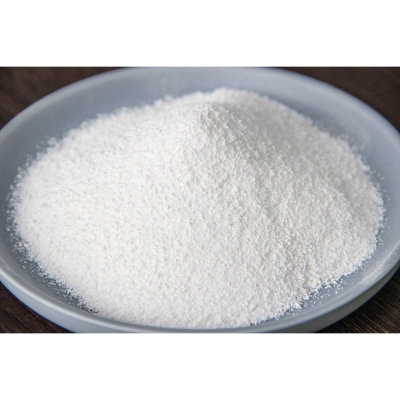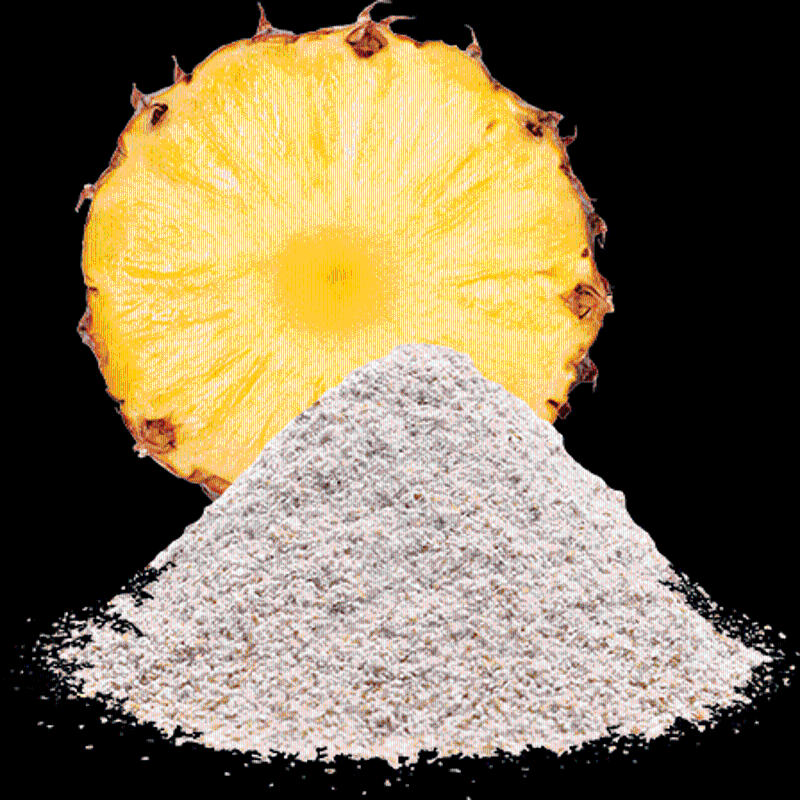Advances in the study of lipase and its application in feed
-
Last Update: 2020-07-02
-
Source: Internet
-
Author: User
Search more information of high quality chemicals, good prices and reliable suppliers, visit
www.echemi.com
lipase (
Triacylycerollipase E C3.1.1.3) is a widely used enzyme that plays an important role in lipid metabolismOn the oil-water interface, lipase catalyzes the hydrolysis of triamide glycerin, releasing less ester-bonded glycerides or glycerin and fatty acidsThe lipase reaction condition is mild, has excellent stereoscopic selectivity, and does not cause environmental pollution, so it is widely used in many industrial fields such as food, leather, medicine, feed and detergent1the source of lipase
is widely present in plants and animals and microorganismsPlants contain more lipase are oil crop seeds, such as castor seeds, rapeseed, when oil seeds germinate, lipase can work with other enzymes to catalyze the production of lipids sugar, provide seeds rooted in the necessary nutrients and energy; In animals, various types of lipase control the processes of digestion, absorption, fat reconstruction and lipoprotein metabolism, and are more abundant in bacteria, fungi and yeast
(Pandeyand other)Because of the variety of microorganisms, rapid reproduction, easy genetic variation, has a wider role than plants and animals
p H, the effect temperature range and substrate specificity, and microbial sources of lipase are generally secreted extracellular enzymes, suitable for industrial production and obtain high purity samples, so microbial lipase is an important source of industrial lipase, and also has important implications for theoretical research2
the properties of lipase
lipase is a class of enzymes with a variety of catalytic capabilities, can catalyze the hydrolysis of triamide glycerides and some other water insoluble esters hydrolysis, alcoholation, esteration, transesterase and esters reverse synthesis reaction, in addition to showing the activity of other enzymes, such as phospholipids, hemolytic phosphase, cholesterol esterase, sylpeptide slysolution activities, etc The play of different activities of lipase depends on the characteristics of the reaction system, such as promoting ester hydrolysis in the oil-water interface, while in organic phases enzyme-induced synthesis and ester exchange can be used The nature of lipase mainly includes the most suitable temperature and pH , temperature and pH stability, substrate specificity and so on To date, a large number of microbial lipases have been isolated and purified and their properties have been studied, with different (veeraragavan , etc .) in molecular weight, most suitable pH , optimum temperature, pH and thermal stability, isoelectric points and other biochemical properties In general, microbial lipase has a broader role than plant and animal lipase
pH , temperature range, high stability and activity, specific to substrates (Schmid , etc.; kazlauskas and other ) The catalytic properties of lipase are the largest catalytic energy in the oil-water interface, as early as 1958 the of the Sarda and Desnnelv Water-soluble enzymes act on the water-insoluble substrates and react on the interface of 2 completely different phases This is a characteristic of the difference between lipase and esterase The of sterase (E C3.1.1.1) is water soluble, and its most suitable substrate is a ester formed by short-chain fatty acid (
C8) The preparation methods of lipase in the production of 3 are extracting, chemical synthesis and microbial fermentation Extraction method is limited in resources, complex process, low yield, chemical synthesis is too expensive, the application prospect of microbial fermentation method is much greater than the extraction method and chemical synthesis method, it is not subject to environmental impact, rich in resources, short enzyme production cycle, product simple and low cost, easy to manage in production Commercial lypousise mainly comes from the fermentation of various microorganisms such as bacteria, yeast and fungi, some molds can be fermented by solid fermentation and liquid deep fermentation Through traditional mutagenic breeding and optimization of fermentation conditions to improve the production of lipase, so that many lipase to achieve industrial production, especially the introduction of genetic engineering, greatly improve the production of lipase Because of the extraction of material source and enzyme content factors, plant and animal fat enzymes are mainly used in scientific research the application of 4 lipase in feed the shortage of feed resources has always been a big problem in China's aquaculture industry, in the case of serious shortage of cultivated land and water resources, grain production has been difficult to improve The feed conversion rate in animal production in China is low, and the feed conversion rate of pigs, chickens and cows is lower than that of the international advanced level
0.3 to 0.6 percentage points, making the problem of insufficient feed resources more serious The development and application of enzyme preparation for feed greatly alleviates the shortage of feed resources In recent years, enzyme preparations have been one of the hot topics of animal nutrition research at home and abroad, and their effective application in feed industry makes it possible for the feed industry and aquaculture to be safe, efficient, environmentally friendly and sustainable the role of fat in livestock and poultry is mainly oxidation feed, it contains energy is 2.25 times the energy of carbohydrates, can meet the requirements of animalbody higher energy concentration; In addition, adding fat can effectively improve the palate of the feed Therefore, it is common to add fat to feed in pig, chicken and cow breeding lipase is the most basic enzyme in fat metabolism, if lack of will endanger the health of the body Single-stomach animals themselves can secrete endogenous digestive enzymes such as amylase, protease and lipase However, the digestive function of young birds and young animals has not yet developed soundly, and the amount of endogenous digestive enzyme secretion is insufficient In modern pig production, in order to shorten the breeding cycle of sows and make piglets adapt to plant protein diet as soon as possible, early weaning and even ultra-early weaning in pig production is generally implemented, but early weaning produces obvious stress, adverse effects on digestive system development and digestive enzyme secretion, digestive enzyme secretion decreased sharply, weaning 2 weeks after gradually recovering and rising Inadequate secretion of digestive enzymes within two weeks of weaning is one of the main factors in the growth block of weaning piglets, most digestive enzymes in chicks develop to peak at about 2 weeks of , and individual (
such as lipase ) to about 21 days old Therefore, the insufficient secretion of digestive enzymes is one of the main limiting factors for feed utilization in chicks The addition of exogenous amylase, protease, lipase, etc to the diet of young birds and young animals can supplement the deficiency of endogenous enzymes in the body, and can reduce the weaning stress of weaning pigs and improve the production performance of animals Some studies have shown that the addition of exogenous enzymes to pig and poultry diet also has a certain effect on the secretion of endogenous digestive enzymes, thus facilitating the digestion, decomposition and absorption of nutrients in livestock and poultry Exogenous lipase can improve the fat digestion rate in feed, especially in rice bran, and thus improve the apparent metabolic energy value and feed conversion rate of rice bran (Pluske and other ) Polin and so on to the bailique feeding with 4% animal oil of corn base diet, studied the effect sourcant of pig pancreatitase and bile salt on fat digestion, in the case of adding and not adding 0.4% bile acid, after hatching 2 to 9d to add 0.1% Fat enzymes can improve the absorption of fat, but the effect is not significant, the reason is not difficult to understand, under acidic conditions, pig pancreatitase is prone to inactivation, when it reaches the main site of action (
duodenum ) its vitality has been quite low, and the active performance of pig pancreatiase depends on the presence of co-fat assase and bile salts If lipase is acid-resistant and its vitality is not dependent on co-copsase and bile salts, then theoretically adding it to the diet should improve fat digestion Adding lipase to feed containing full-fat rice bran, high-oil corn, dried meal, blood powder, and bread can improve epigenetic digestion 5% to 11% , increase the rate of weight gain of pigs and poultry 4 % to 10% 10 %, improve feed utilization 2% to 7% , reduce the of 5
Outlook the 20th century 50 years people have recognized the role of enzyme preparation in feed, but due to its high cost of production and slow progress, to the 20 th century 80 years due to the rapid progress of genetically modified technology and microbial fermentation industry, the application of feed enzymes has entered a rapid development stage, whether in academic research or technology applications, has achieved remarkable results There are many types of enzymes for feeding, and lipase is one of them Young animals secrete less endogenous enzymes, adult animals in a pathological, stressstate when endogenous enzymes also occur secretion disorders or reduced secretion The enzyme can release fatty acids, improve the energy utilization rate of grease feed raw materials, increase and improve the flavor and flavor of feed, improve the appetite of livestock, and have a certain therapeutic effect on local inflammation
(
Yang Zhenhai and other ) However, compared with other enzymes, the theoretical research and application of lipase research is much less, the reason, the author believes, mainly because the particularity of lipase increases the difficulty of research, resulting in the study and application of lipase to lag behind there are many commercially asse products, mostly made by microbial fermentation, and only a few of the apiases from animals are prepared by methods extracted from animals According to different uses to develop different characteristics of lipase products, and these have realized the commercial production of lipase products pH stability in the neutral partial base range, acid tolerance is poor
(Claudia) , and added to the feed lipase must go through the acidic conditions of the gastrointestinal tract and endoenzyme hydrolysis to reach the site, and can achieve the pH in the site of the role of the most high activity Based on this situation, it is also a very meaningful work to carry out some exploratory work on lipase research, so as to promote the application of lipase in the feed industry Technology Exchange Forum: Recent Hot Spots: Related Articles:
This article is an English version of an article which is originally in the Chinese language on echemi.com and is provided for information purposes only.
This website makes no representation or warranty of any kind, either expressed or implied, as to the accuracy, completeness ownership or reliability of
the article or any translations thereof. If you have any concerns or complaints relating to the article, please send an email, providing a detailed
description of the concern or complaint, to
service@echemi.com. A staff member will contact you within 5 working days. Once verified, infringing content
will be removed immediately.







